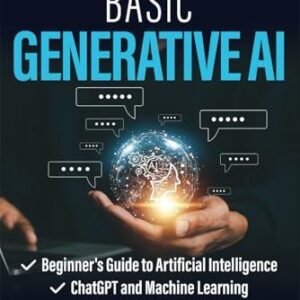As the world grapples with the pressing challenges of climate change and resource depletion, the transition to renewable energy sources has never been more critical. However, the path to a sustainable future is laden with complexities—from optimizing energy production to ensuring efficient storage and distribution. Enter artificial intelligence (AI), a game-changing force poised to revolutionize the renewable energy sector. In this article, we will explore the myriad ways AI is not only enhancing efficiency and innovation within renewable energy solutions but also unlocking the full potential of green power. Join us as we delve into the transformative capabilities of AI, from predictive analytics in solar energy generation to smart grid management and beyond, and discover how this technology is paving the way for a cleaner and more sustainable energy landscape.
Table of Contents
- The Integration of Artificial Intelligence in Renewable Energy Management
- Enhancing Energy Efficiency through Predictive Analytics and Machine Learning
- Innovative AI Applications for Optimizing Solar and Wind Energy Production
- Strategic Recommendations for Adopting AI in Sustainable Energy Practices
- Concluding Remarks
The Integration of Artificial Intelligence in Renewable Energy Management
The landscape of renewable energy is evolving rapidly, and the integration of artificial intelligence is playing a pivotal role in this transformation. By leveraging advanced algorithms and data analytics, AI enhances the efficiency and reliability of energy systems. It enables operators to optimize energy generation and distribution while minimizing operational costs. Key benefits of AI in renewable energy management include:
- Predictive Maintenance: AI systems analyze data from various sensors to predict equipment failures before they happen, ensuring smooth operations.
- Energy Forecasting: Machine learning models can predict energy production from renewable sources like wind and solar, thus allowing for better grid management.
- Demand Response Optimization: AI facilitates real-time analysis of power demand and supply, helping to balance the grid effectively.
Moreover, the synergy between AI and renewable energy creates opportunities for innovative solutions that can reshape the industry. As energy storage technologies improve, AI can further optimize the use of energy generated from renewable sources. For instance, consider the following table that illustrates how AI can enhance solar energy management:
| AI Application | Benefit |
|---|---|
| Smart Inverters | Maximize energy conversion efficiency. |
| Energy Management Systems | Dynamic load adjustment for peak demand times. |
| Performance Monitoring | Real-time alerting for underperforming systems. |
These applications underscore the versatility of AI as it enhances the effectiveness of renewable energy systems. the combination of AI and renewable energy not only promotes sustainability but also paves the way for a smarter, greener future.
Enhancing Energy Efficiency through Predictive Analytics and Machine Learning
Predictive analytics and machine learning are revolutionizing the landscape of energy efficiency by enabling organizations to anticipate consumption patterns and optimize resource allocation. By leveraging vast amounts of historical data, these technologies can identify trends and anomalies, allowing for proactive adjustments to energy usage. This not only contributes to cost savings but also significantly reduces carbon footprints. The integration of AI-driven algorithms leads to smarter grid management, ensuring that energy production and consumption are perfectly aligned, thus minimizing waste.
Furthermore, machine learning models can evaluate real-time data from various sources, such as weather forecasts and consumer behavior, to optimize renewable energy generation. As a result, energy providers can better predict peak demand periods and adjust their renewable energy output accordingly. The benefits include:
- Improved Load Management: Anticipating energy needs helps in balancing supply and demand effectively.
- Resource Optimization: Enables increased use of renewable resources and decreases reliance on fossil fuels.
- Cost Efficiency: Reduces operational costs associated with energy distribution and consumption.
| Technology | Benefit |
|---|---|
| Predictive Analytics | Forecasts energy needs and optimizes supply chain. |
| Machine Learning | Enhances decision-making processes through data-driven insights. |
| Smart Grids | Improves energy distribution and reduces outages. |
Innovative AI Applications for Optimizing Solar and Wind Energy Production
Artificial Intelligence is revolutionizing the way we harness renewable energy, particularly solar and wind power. By leveraging sophisticated algorithms, AI systems can analyze vast amounts of data from weather patterns, energy output, and grid demand in real-time. This capability allows for predictive maintenance of energy systems, ensuring that solar panels and wind turbines operate at peak performance. Key AI applications include:
- Resource Optimization: AI tools can optimize the placement and orientation of solar panels and wind turbines to maximize energy capture based on geographical and meteorological data.
- Dynamic Forecasting: Advanced machine learning models can accurately forecast energy production by predicting weather changes, enabling better energy management and grid stability.
- Consumer Demand Scheduling: AI-driven analytics can predict electricity consumption patterns, allowing for enhanced matching of energy production with consumer demand.
Moreover, integrating AI with IoT devices in energy systems enhances operational efficiency. Smart sensors collect data on energy output and environmental conditions, feeding it back to AI systems that optimize energy distribution. For instance, here’s how AI aids in real-time grid management:
| AI Functionality | Benefit |
|---|---|
| Load Balancing | Maintains grid stability by dynamically adjusting energy supply based on real-time usage. |
| Data Analysis | Identifies performance trends and potential failures before they occur, reducing downtime. |
| Integration of Renewables | Facilitates the smooth inclusion of solar and wind resources into the energy grid. |
Strategic Recommendations for Adopting AI in Sustainable Energy Practices
To effectively integrate AI into sustainable energy practices, organizations should prioritize exploring and investing in advanced predictive analytics. By leveraging AI’s data processing capabilities, energy producers can optimize energy production forecasts, resulting in better resource allocation and reduced waste. Key strategies include:
- Implementing machine learning algorithms to enhance demand forecasting.
- Utilizing AI-driven simulations to model energy generation scenarios.
- Integrating real-time data analytics for dynamic grid management.
Such proactive measures not only streamline operations but also contribute to a more resilient and responsive energy infrastructure.
Moreover, partnerships with tech firms specializing in AI can accelerate the deployment of innovative solutions across the renewable energy sector. This collaboration can facilitate the development of custom AI tools tailored to specific needs, whether that be in improving energy storage techniques or enhancing the performance of solar panels. Considerations for successful partnerships should include:
- Ensuring transparent communication between energy producers and tech developers.
- Establishing mutual goals that prioritize sustainability.
- Encouraging a culture of continuous learning and adaptation to technological changes.
By embracing these strategies, organizations can harness the full potential of AI, paving the way for efficient and sustainable energy practices in the fight against climate change.
Concluding Remarks
As we stand at the dawn of a new era in renewable energy, the integration of artificial intelligence into our energy systems presents unprecedented opportunities for innovation and sustainability. By harnessing the analytical power and predictive capabilities of AI, we have the potential to optimize energy production, streamline distribution, and reduce waste like never before. The journey toward a greener future is filled with challenges, but with AI by our side, we are not just imagining solutions—we are actively unlocking them.
embracing AI in the realm of renewable energy is not just an option; it is a necessity for a sustainable future. As we continue to explore and develop these technologies, collaboration among researchers, businesses, and policymakers will be crucial in ensuring that we make the most of AI’s potential. The path may be intricate, but with each step we take, we are paving the way to a cleaner, more efficient energy landscape for generations to come. Let’s move forward together in this exciting endeavor, harnessing the power of technology for the benefit of our planet.
Thank you for joining us on this journey toward unlocking green power. Stay tuned for more insights and updates as we continue to explore the intersection of AI and renewable energy!





